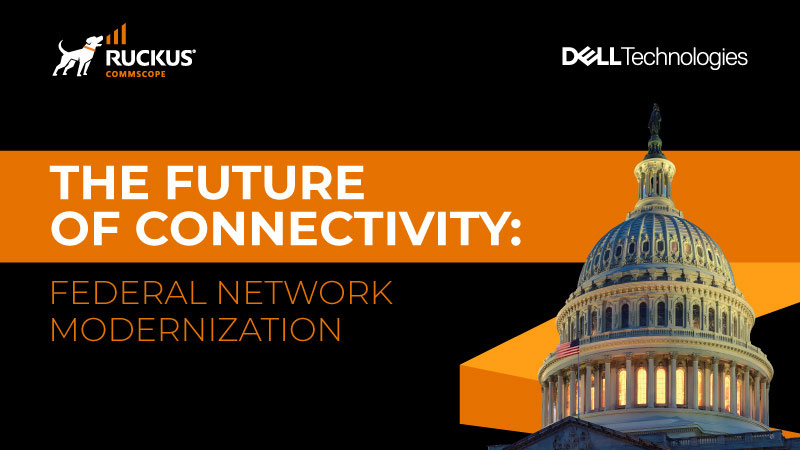
Federal government networks are under more pressure than ever before, and technology officials are making clear that now is the time for network modernization.
According to a recent MeriTalk study – conducted in partnership with RUCKUS and Dell Technologies – 95 percent of Federal government telecommunications decisionmakers are experiencing frustrations with their current network, and 82 percent of agencies said their networks impede their ability to meet evolving mission demands.
The number and diversity of connected devices and systems, and the data they generate, are exploding. The rise of edge computing and the internet of things is extending networks even further and enabling more data collection and transmission. As emerging technologies – from AI and machine learning to 5G wireless – grow more available, data transmission requirements and network complexity increase exponentially.
MeriTalk surveyed 150 Federal government telecommunications decisionmakers in November 2023, and found that 85 percent said now is the time for network modernization.
“Connectivity demands continue to escalate,” said James Wynia, director of product management networking for the Enterprise Solutions Group at Dell Technologies. “Meeting those needs is critically important.”
Although the Federal government spends more than $100 billion on IT and cyber-related investments each year, experts say Federal networks continue to require urgent modernization to meet mission requirements.
“A lot of Federal networks, unfortunately, have been neglected,” said Duke Butler, vice president for business development at RUCKUS, a network solutions provider. “They haven’t had aggressive upgrades, or in some cases, necessary maintenance. They have legacy components that restrict performance and open up security holes.”
MeriTalk’s new survey revealed both the urgency of network modernization and optimism for it to continue. Top drivers for modernization include data growth at the edge (cited by 37 percent of respondents), followed by cloud integration (33 percent), and quality of service (33 percent).
Eighty-four percent of Federal government telecommunications officials believe a modern, agile network is crucial to their agency’s ability to efficiently adapt to changing mission requirements and technologies, and nearly half feel strongly that a modern network would improve their agency’s cybersecurity posture and resilience.
Recent cyberattacks targeting Federal agencies – such as the breach of MOVEit data transfer software in June 2023 and the July 2023 breach of Microsoft webmail – underscore the network-modernization-cybersecurity priority.
MeriTalk’s research found that scalability limitations came in as the top challenge with current Federal networks, followed by security concerns, difficulty deploying new applications, and difficulty integrating emerging technology.
Half of respondents said network modernization is their “number one” IT priority going forward, while an additional 45 percent called it a “top priority.”
Modernizing to replace legacy systems with more efficient, high-bandwidth networks based on open standards will “support modern workloads, offer seamless connectivity, and improve performance and reliability,” said Saurabh Kapoor, director of product management and strategy for emerging networking technologies at Dell Technologies.
A multivendor approach, experts say, is more effective than a single vendor strategy in providing security and achieving high performance and other key metrics.
“Many organizations will settle for a single vendor that can check the most boxes. Historically, this solution provides the most mediocre outcome,” said Butler. “Multivendor solutions that provide best-of-breed functions, performance, and ability to respond to changing parameters enable the best outcomes.”
Kapoor added that a single vendor approach can limit innovation.
“Dependency on a single vendor makes the government heavily reliant on specific technologies, products, and solutions provided by that vendor,” he said. “That limits the flexibility to switch to an alternative solution that is more advanced.”
As agencies continue to transform and modernize their networks, a multivendor network strategy encourages innovation and increases competition to reduce costs.
“The benefits of transforming and modernizing Federal networks are significant – speed, reliability, redundancy, and security top the list,” MeriTalk’s research says. “Modern networks are designed to deliver these benefits and are purpose-built to meet specific agency requirements. They are critical to delivering citizen services, supporting our nation’s warfighters, and defending against evolving threats. They are essential to increasing efficiency and reducing costs.”
And the result of a multivendor strategy will be a “significantly more agile, innovative, and secure network infrastructure that enhances mission outcomes, promotes innovation, and reduces overall costs,” the research says.
Download the full report, “The Future of Connectivity: Federal Network Modernization,” here.
